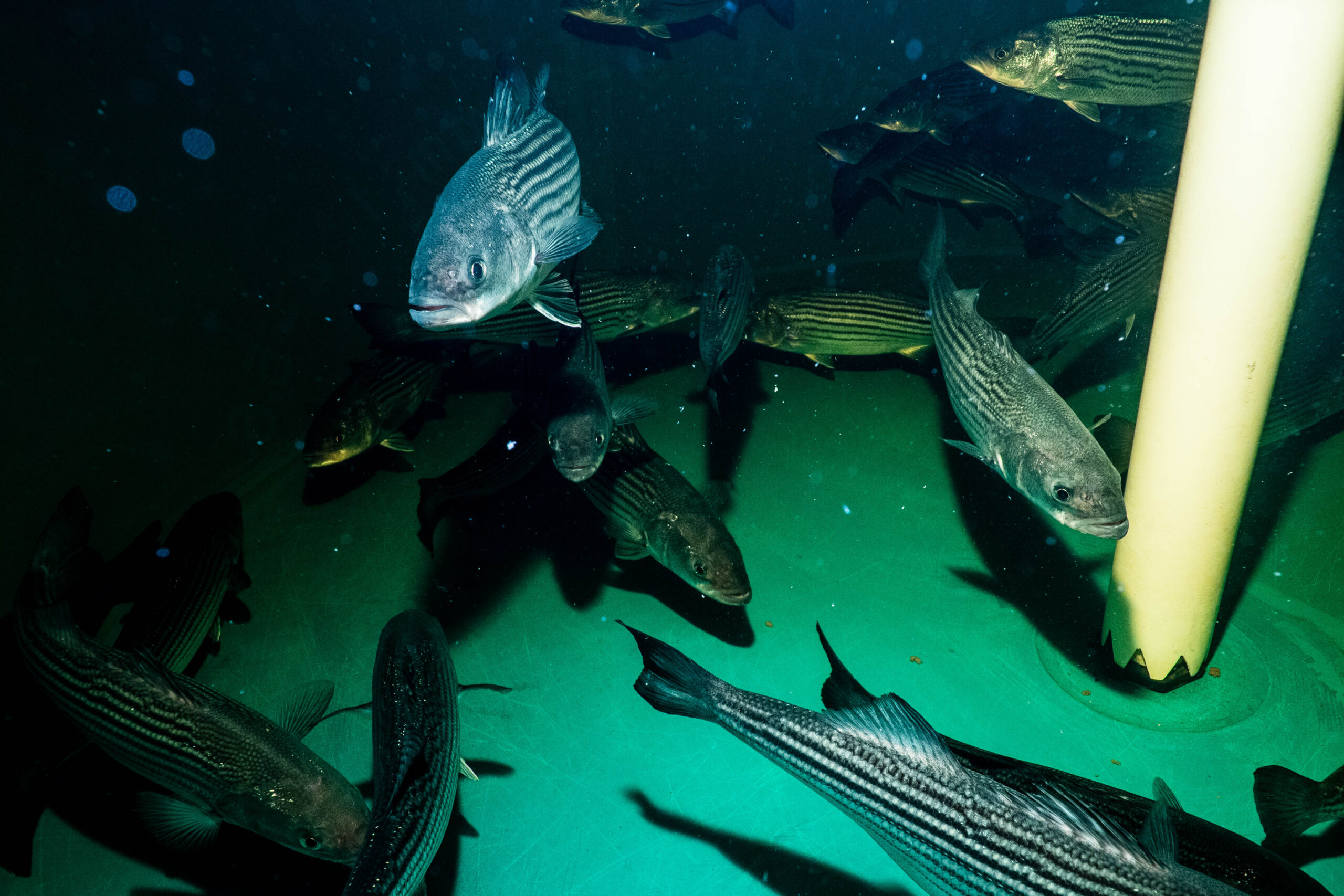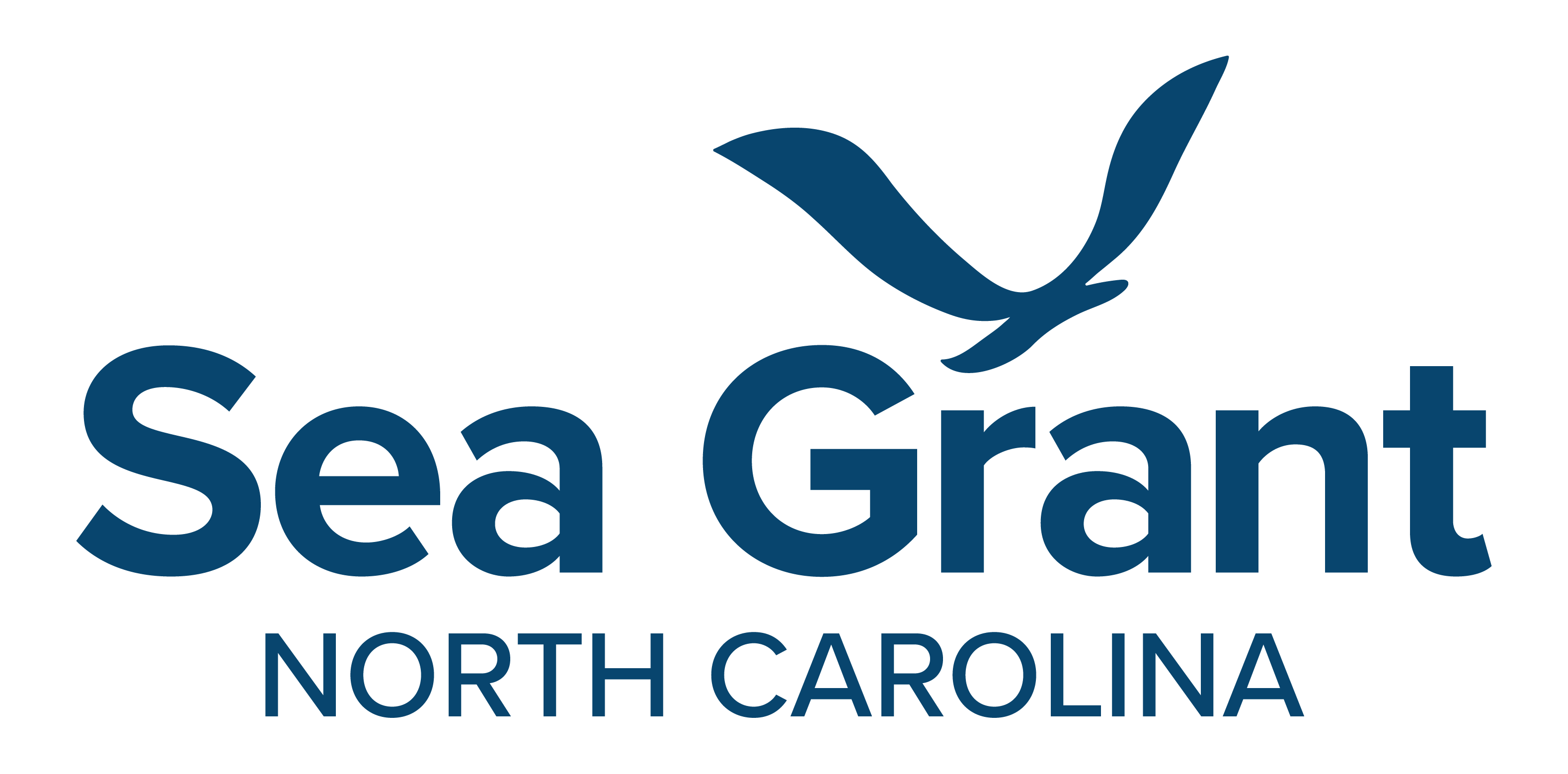
Lessons in Mariculture
Marine aquaculture, or mariculture, is a growing industry in North Carolina — one that offers many career avenues. Lessons in Mariculture includes 10 free lesson plans that are aligned with North Carolina science standards and with Career and Technical Education programs.
These lesson plans cover a variety of subjects, launching student explorations of aquaculture species and biology, production methods, and even business planning. Each lesson plan builds off knowledge students will gain as they progress through the lessons, but teachers also can pick and choose to suit their curriculum.
In addition, Lessons in Mariculture come ready-made and are easy to use, with a wide array of resources and materials: videos, worksheets, hands-on activities, discussion questions, interviews with mariculture producers, classroom presentations and more.
Lesson 1: Introduction to Aquaculture
Students will learn what aquaculture is and test their knowledge in a fun group exercise.
Lesson 2: Aquaculture History and Overview
In this lesson, students will learn about aquaculture’s origin. They also will study the role of aquaculture in meeting global seafood demand and the factors that affect aquaculture production.
- Access Lesson Plan 2.
- Download the PDF for Lesson Plan 2.
- This lesson includes a companion PowerPoint presentation. Download the PowerPoint here.
Lesson 3: North Carolina Aquaculture Species
This lesson covers aquaculture species that are grown in the state. Students will identify key information about the species’ biology, unique features and their historical use in aquaculture.
Lesson 4: Zoom in on Aquaculture
Students will examine a North Carolina aquaculture species — the blue crab — at multiple scales, starting with a big-picture look at the species’ habitat and homing in on the organism’s adaptations.
- Access Lesson Plan 4.
- Download the PDF for Lesson Plan 4.
- This lesson includes a companion PowerPoint presentation. Download the PowerPoint here.
Lesson 5: Aquaculture Production Methods and Policy
Students will explore different aquaculture production methods and consider which species are most suitable for a particular type of technology. They also will research the laws and regulations that determine which production methods are permissible.
- Access Lesson Plan 5 here.
- Download the PDF for Lesson Plan 5.
- This lesson includes a companion PowerPoint presentation. Download the PowerPoint here
Lesson 6: Shellfish Biology and Aquaculture
In this lesson, students will gain understanding of the ecosystem benefits of shellfish and the role that shellfish aquaculture plays in reducing harvest pressure on wild stocks. Focus is on the Eastern oyster.
Lesson 7: Open Water Marine Finfish Aquaculture and Its Environmental Impacts
This lesson covers a variety of environmental concerns related to open water marine finfish aquaculture, as well as potential solutions.
Lesson 8: Habitat Requirements for Mariculture Species
Students will consider the biotic and abiotic factors that influence successful production of a species grown through marine aquaculture, or mariculture.
Lesson 9: North Carolina Business Perspectives on Aquaculture
Students will investigate what makes a specific N.C. aquaculture venture unique. Then they will compare and contrast that venture with other aquaculture businesses in the state.
- Access Lesson Plan 9.
- Download the PDF for Lesson Plan 9.
- Lesson Plan 9 includes three pre-recorded interviews that supplement student research.
This lesson also includes the Careers in Mariculture video, produced by North Carolina Sea Grant.
Lesson 10: Assessing Profitability of a Mariculture Operation
In this activity, students will use real data from oyster farming operations in Virginia to examine the costs of doing business. They will become familiar with farm enterprise budgets — common business planning tools used in agribusiness.
- Access Lesson Plan 10.
- Download the PDF of Lesson Plan 10.
- This lesson refers to a farm enterprise budget tool manual. Download the manual.
- This lesson requires use of an Excel file of the farm enterprise budget tool. Download the Excel file here.
The lesson-planning team included high school science teacher Amy Sauls, Sea Grant coastal economist Jane Harrison, Sea Grant marine education specialist Terri Kirby Hathaway, Sea Grant science writer Julie Leibach, Sea Grant marine aquaculture specialist Chuck Weirich, science illustrator Melissa Smith, and graphic designer Kathy McKee, as well as high school science and agricultural teachers who helped to develop and field-test the lessons.
